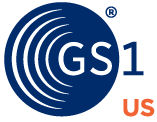Remember when the pandemic hit and everything went haywire? Supply chains were no exception. With lockdowns and labor shortages, plus a big shift in how we shop, things got delayed and shelves went empty. We thought it would get better once the pandemic eased. But more challenges kept popping up—and they still do.
Now, disruptions are a regular part of the supply chain. But it’s not all doom and gloom. We just need to understand that supply chains are like giant global spiderwebs: They're complex, but we can plan for and tackle the ongoing issues.






